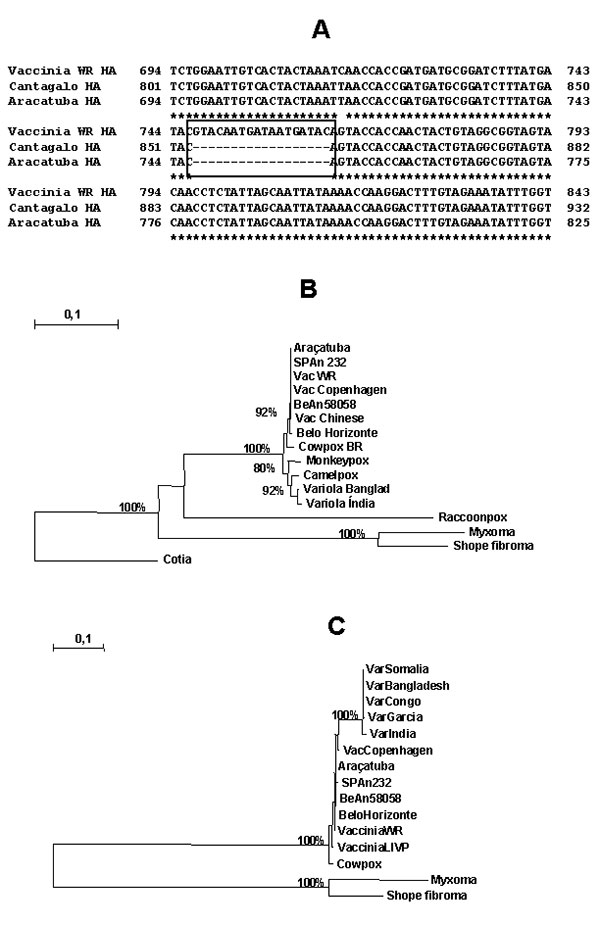Volume 9, Number 2—February 2003
Research
Araçatuba Virus: A Vaccinialike Virus Associated with Infection in Humans and Cattle
Figure 2

Figure 2. (A) Nucleotide sequence of the Araçatuba virus hemagglutinin (HA) and comparison with same sequences from Cantagalo virus and vaccinia virus–Western Reserve (WR). Box indicates deletion region conserved in the sequences of both Araçatuba and Cantagalo viruses, but not in vaccinia virus, Western Reserve (WR). Star (*) indicates regions conserved in all three viruses. (B) Phylogenetic tree constructed based on the nucleotide sequence of poxvirus thymidine kinase genes. Nucleotide sequences were obtained from GenBank (accession nos. X01978, M35027, M57768, AF163843, AF163844, EVY18384, U94848, K02025, S51129, L22579, S55844, X52655, and M14493). (C) Phylogenetic tree constructed based on the nucleotide sequence of poxvirus vaccinia growth factor genes. Nucleotide sequences were obtained from GenBank (accession nos. U18340, L22579, U18337, U18338, X69198, M35027, J02421, S61049, CVU76380, AF170722, and M15921). The Treecon program (29) was used to construct trees. Bootstrap confidence intervals are shown on branches (100 sample iterations).